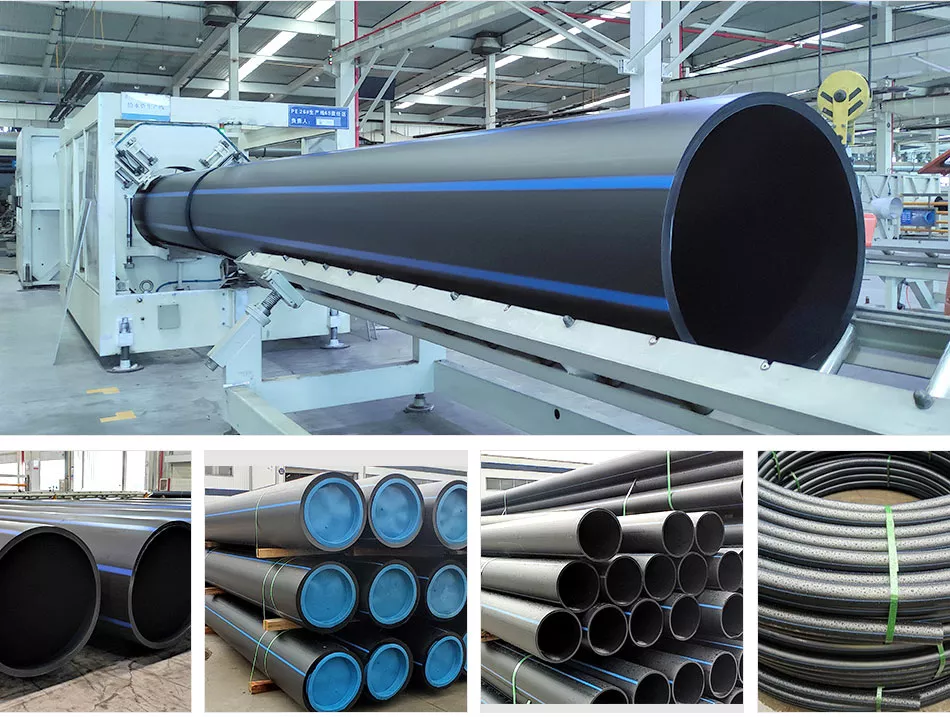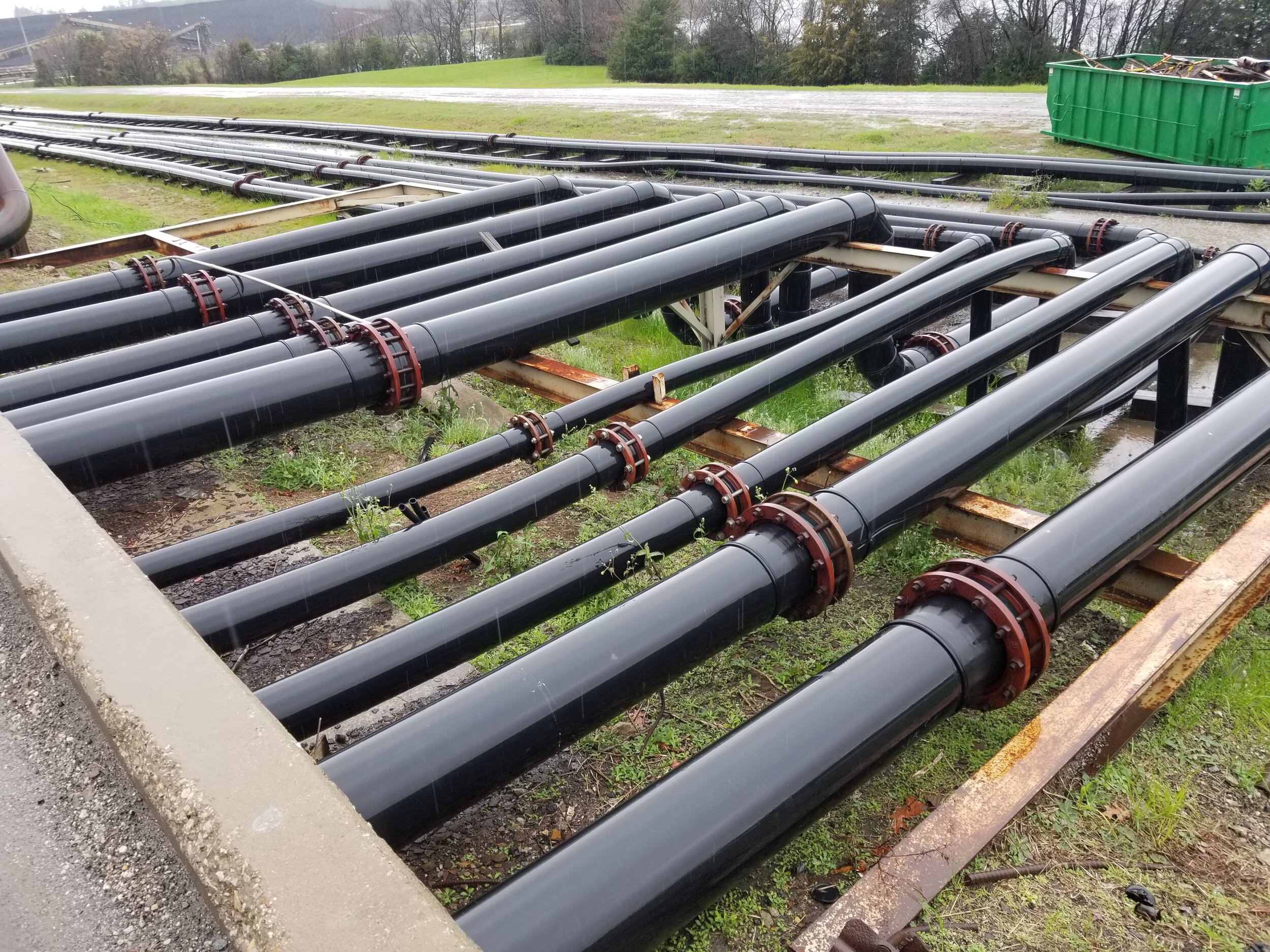How American Plastics HDPE Pipe for Oilfield Supports Energy Infrastructure
The Essential Actions for Effective Installment of HDPE Pipeline in Your Following Task
Successful installment of HDPE pipeline requires mindful planning and implementation. Secret steps include assessing job requirements, preparing the website, and selecting correct signing up with methods. Each stage plays a critical function in ensuring the honesty and efficiency of the pipe. Understanding these necessary steps can substantially influence the general success of the job - hdpe pipe in stock Midland TX. Nevertheless, the nuances of each step might hold the key to conquering typical difficulties encountered during installation
Recognizing the Benefits of HDPE Pipeline
High-density polyethylene (HDPE) pipe uses countless benefits that make it a preferred selection for numerous applications. Its high resistance to deterioration and chemicals assurances durability popular atmospheres, greatly extending the life-span of setups. Furthermore, HDPE's flexibility permits easier setup, specifically in tough surfaces, as it can bend without breaking. The lightweight nature of HDPE pipe streamlines transportation and handling, reducing labor prices during installment.
Furthermore, HDPE pipe is recognized for its reduced rubbing coefficient, which enhances liquid flow and lessens energy intake. Its smooth building and construction reduces the risk of leaks, adding to better source monitoring and environmental management. On top of that, HDPE is recyclable, straightening with sustainable practices and lowering environmental influence. On the whole, the combination of strength, adaptability, and eco-friendliness makes HDPE pipe an exceptional option for a vast array of tasks, from water distribution to commercial applications.
Preparation Your HDPE Pipe Installment
When planning an installment of HDPE pipeline, cautious factor to consider of a number of key aspects is crucial to safeguard an effective project. Job managers need to analyze the details requirements of the pipe, including the meant usage, circulation prices, and ecological problems. Comprehending these criteria will certainly lead the selection of ideal pipeline dimensions and product quality.
Next off, timelines ought to be established, factoring in procurement routines and any type of possible delays. Coordination with local authorities for authorizations and governing conformity is additionally important. Furthermore, an in-depth budget plan should be prepared, including all expenses associated with products, labor, and equipment.
It is important to involve a certified team experienced in HDPE pipe installation. Their competence will certainly help mitigate dangers, warranty adherence to industry criteria, and ultimately add to the task's success. Comprehensive preparation lays the groundwork for a smooth installation procedure and long-lasting efficiency of the HDPE piping system.
Preparing the Site for Installment
Correct website preparation is vital for the effective installation of HDPE pipeline. Prior to setup starts, the website needs to be extensively examined to assure it satisfies all needed needs. This consists of checking the ground for existing frameworks, energies, and potential risks that might restrain the installation procedure.

Right elevation and alignment should be developed to preserve a constant gradient for drainage functions. Correct drain around the installment website is likewise imperative to stop water accumulation, which can result in complications down the line.
Methods for Joining HDPE Water Lines
Attaining a trustworthy connection in between HDPE pipes is essential for making certain the integrity and long life of the installment. Numerous techniques exist for signing up with these pipelines, each suited for various project demands. Blend welding is among one of the most typical techniques, making use of warmth to bond the pipeline finishes with each other, creating a seamless and sturdy connection. This method can be additional classified right into outlet fusion and butt blend, depending upon the pipe configurations.
Mechanical fittings are another alternative, using clamps and threaded ports to sign up with areas of HDPE pipe. While normally faster to set up, they may need extra maintenance gradually. Electrofusion is a specialized technique that includes utilizing electrical current to heat and fuse the pipes via particularly made fittings, making sure a solid bond. Choosing the proper signing up with method is critical, as it directly influences the overall efficiency and dependability of the HDPE piping system in the intended application.
Evaluating and Examination of Installed Water Lines
The testing and examination of set up HDPE pipelines are important to guaranteeing their capability and longevity. This procedure incorporates visual assessment techniques, pressure testing techniques, and leakage discovery treatments to determine potential issues. By using these methods, experts can confirm the honesty of the installment prior to it is taken into usage.
Visual Examination Techniques
Utilizing effective visual inspection methods is vital for ensuring the integrity of installed HDPE pipelines. Examiners should methodically examine all noticeable areas of the pipeline to determine any type of indications of damages, imbalance, or improper installment. Key indicators to assess include joint stability, surface area irregularities, and links. Assessors might use tools such as amplifying glasses or video cameras to improve visibility and information. It is vital to check for indicators of ecological anxiety, such as bending or too much bending, which might endanger efficiency. Consistent paperwork of searchings for permits tracking modifications in time and assists guide necessary repair work. By sticking to well-known visual examination procedures, job teams can notably minimize the risk of future failings and guarantee long-term integrity of the piping system.
Pressure Examining Methods
Visual assessment serves as a preliminary measure, yet it is not adequate on its very own to ensure the performance of set up HDPE pipelines. Pressure screening techniques are essential for making sure the honesty of these systems. Usually, hydrostatic screening is utilized, where the pipelines are full of water and subjected to pressure degrees over the intended operating pressure. This method helps recognize weak points or prospective leaks. Pneumatic testing can likewise be made use of, although it carries higher risks because of the compressibility of air. Despite the technique chosen, adhering to sector criteria and safety and security protocols is crucial. After performing pressure tests, comprehensive documents is essential to confirm the outcomes and validate that the installation satisfies all functional needs prior to proceeding to the following stage of the task.

Drip Detection Treatments
How can one ensure that mounted HDPE pipelines are without leakages? Effective leakage discovery treatments are vital to protect the stability of the system. Aesthetic examinations should be executed, looking for indications of water buildup or dirt disintegration around pipeline joints. Following this, pressure screening can validate the system's strength. A typical technique is the hydrostatic test, where water is presented under stress, checking for declines that suggest potential leaks. Additionally, progressed innovations, such as acoustic sensing units or infrared thermography, can identify leaks that may not be visible. Regular tracking and upkeep additional add to the long life of HDPE pipes, ensuring they remain leak-free throughout their functional life-span. Proper documents of these treatments is vital for compliance and future referral.
Upkeep Tips for Long-Term Performance
To ensure the durability of HDPE pipelines, developing a regular assessment schedule is essential. This positive strategy enables the very early discovery of possible issues, reducing pricey repair work. Furthermore, carrying out correct cleaning techniques will certainly help maintain peak efficiency and stop build-up that can impact capability.
Regular Inspection Arrange
HDPE pipes are understood for their resilience and resistance to rust, developing a normal evaluation timetable is vital for guaranteeing their lasting efficiency. Routine evaluations help recognize possible issues such as leaks, joint stability, and environmental effects that might influence the pipeline's capability. It is suggested that inspections occur a minimum of biannually, or extra often in atmospheres with extreme problems. American Plastics HDPE Pipe for Oilfield. Throughout these assessments, visual checks should be carried out to discover indicators of wear or damages. Additionally, making use of innovation such as ultrasonic testing can give additional insights right into the pipeline's problem. By applying a structured inspection routine, project managers can proactively address issues, therefore prolonging the life-span of HDPE pipes and maintaining system performance
Proper Cleansing Techniques
Correct cleaning techniques play a vital duty in preserving the long-term performance of HDPE pipelines. Regular cleansing protects against the build-up of particles, sediment, and biofilm, which can lead to obstructions and lowered flow efficiency. Operators must use techniques such as high-pressure water jetting or foam cleaning to effectively get rid of pollutants without damaging the pipeline surface area. It is essential to stay clear of using harsh chemicals that may deteriorate HDPE material. In addition, arranged maintenance checks must consist of visual assessments for any kind of indicators of wear or damages. Effectively educated employees must perform these cleaning procedures, ensuring conformity with safety and security and ecological guidelines. By executing these practices, the life expectancy of HDPE pipelines can be considerably prolonged, making sure perfect efficiency throughout their functional life.
Regularly Asked Inquiries
What Are the Environmental Effects of HDPE Pipeline Manufacturing?
The ecological influences of HDPE pipe production consist of greenhouse gas discharges, energy consumption during production, potential plastic air pollution, and obstacles in reusing. Nevertheless, HDPE's durability and resistance to rust can reduce some ecological concerns.
Exactly How Does HDPE Pipe Compare to Various Other Products?

What Equipment Are Essential for HDPE Pipe Installment?
Important tools more info for HDPE pipe installation include a fusion maker, pipeline cutters, shovels, determining tape, and safety and security equipment. Appropriate equipment assurances effective, safe handling and installation, adding to the project's overall success and stability.
Are There Any Type Of Specific Laws for HDPE Pipe Setup?
Specific policies for HDPE pipeline installation differ by region, commonly controlled by regional, state, or government codes. Compliance with these regulations warranties safety, environmental protection, and performance, making adherence important for successful task end results.
Can HDPE Pipeline Be Recycled After Use?
Yes, HDPE pipes can be reused after use. Their thermoplastic nature enables reprocessing, making them appropriate for reusing right into new items. This sustainability element contributes to environmental conservation and promotes circular economy practices in construction.